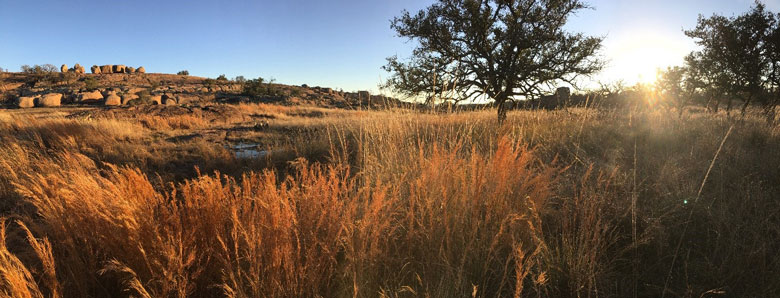Mason Mountain WMA
Phone: (325) 347-5037
Address:
PO Box 1140
Mason, TX 76856
Contact:
Mark Mitchell
Dates Open:
Access is limited to hunters with a Special Permit. Contact Area Manager for specific dates.
Description
Located in the Llano Uplift, Mason Mountain Wildlife Management Area was a working exotic game ranch from the mid 1980s until the Texas Parks and Wildlife Department acquired the tract in 1997. At the time of TPWD acquisition there were more than 15 species of exotic antelope and deer. Today, 6 species of exotic wildlife provide excellent opportunities to study the effects of African ungulates on local habitat, and interactions between exotic and native wildlife. These six exotic species are allowed to exist for research opportunities, demonstration resources, and to provide additional public hunting opportunity. Along with these six species of exotics (Scimitar-horned Oryx, Gemsbok Oryx, Common Waterbuck, Greater Kudu, Thomson's Gazelle, and Axis deer), native wildlife occurring on the WMA include white-tailed deer, bobwhite quail, javelina, wild turkey, mourning dove, fox squirrel, bobcat, raccoon, skunk, armadillo, ringtail "cat", rabbit, gray fox, and many species of reptiles and migratory birds.
The resources of Mason Mountain WMA are dedicated to research concerning the ecology of the Central Mineral Region, and its application to wildlife management on private lands. Today, the traditional landowner that operates a working livestock ranch is becoming less common in the Texas Hill Country. More and more properties area becoming "recreational ranches" whose main goal is to provide outdoor recreationist a place to hunt, watch wildlife, and experience nature. In many of those properties cattle, sheep, and goats have been replaced with exotic ungulates. It is the goal of Mason Mountain WMA to encourage those landowners who are going to stock exotic wildlife to do so in a responsible manner that is less competitive with native species. This means utilizing species that can be contained within their property boundaries, using species whose numbers can be controlled, and using those species that may occupy a foraging niche that is underutilized by existing native wildlife.
The WMA is situated on the boundary between the Central Mineral Region and the Edwards Plateau, and as such, a variety of wildlife habitats are represented. About two-thirds of the Area consists of granite derived soils supporting a community of post oak and blackjack oak. The remainder of the Area is dominated by live oak and Texas oak on limestone derived soils. The topography of the Area is rough, with steep canyons, caliche hills, and granite outcrops. An 8-foot fence to facilitate scientific investigations encloses and sub-divides the WMA into 4 units. In order to properly manage the habitat, deer populations are maintained at approximately one deer to 12 to 15 acres, which is substantively lower than much of the Hill Country.
In addition to TPWD research activities many universities utilize the WMA as an outdoor classroom and study site for undergraduate and graduate projects. Due to the varied geology of the property it offers a unique opportunity to observe and study wildlife and their use of the different habitats, soil types, and environments that exist throughout the Texas Hill Country and Central Mineral Region but confined within a 5300 acre study site.
Although Mason Mountain WMA was acquired by way of a donation from a private individual it is currently funded under the Pittman-Robertson Act using Federal Aid in Wildlife Restoration Program funds.
Public use of the WMA is limited to drawn hunts and portions of the WMA that are open through the APH program for migratory birds (mourning and white-winged dove). Follow us on Facebook @KerrMasonMtnWMAs

- This WMA has restricted access.
- There aren't any restroom facilities.
- Bring your own drinking water.
- Hill Country Wildlife Management